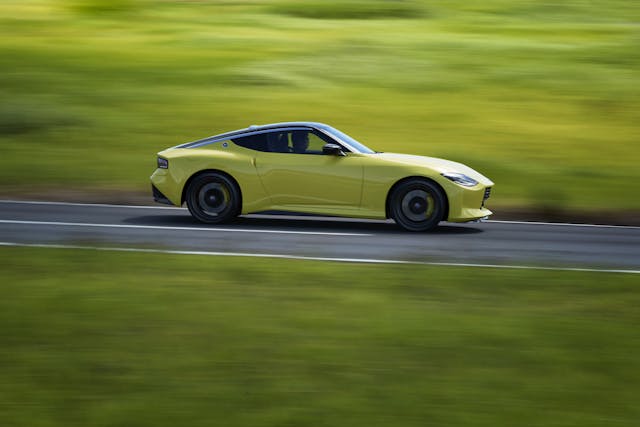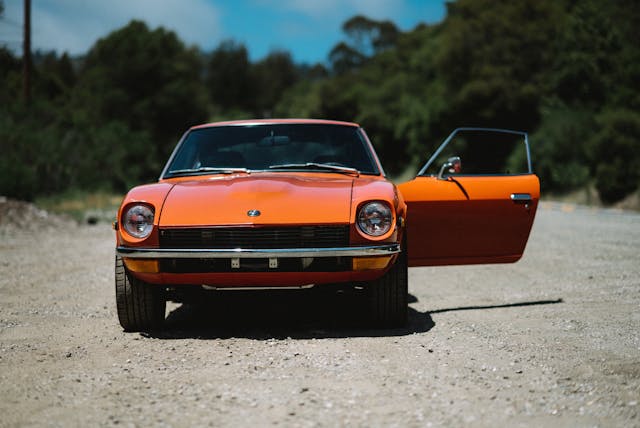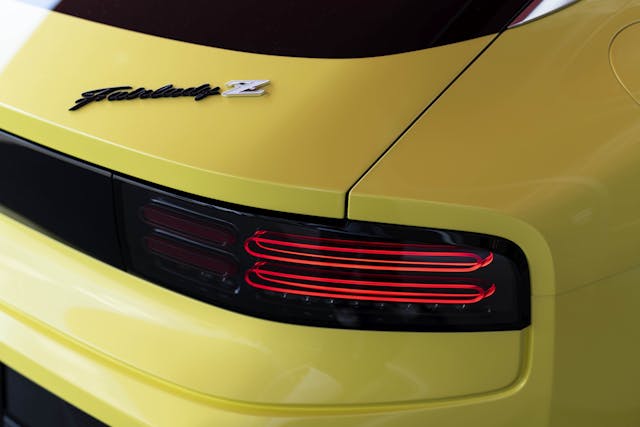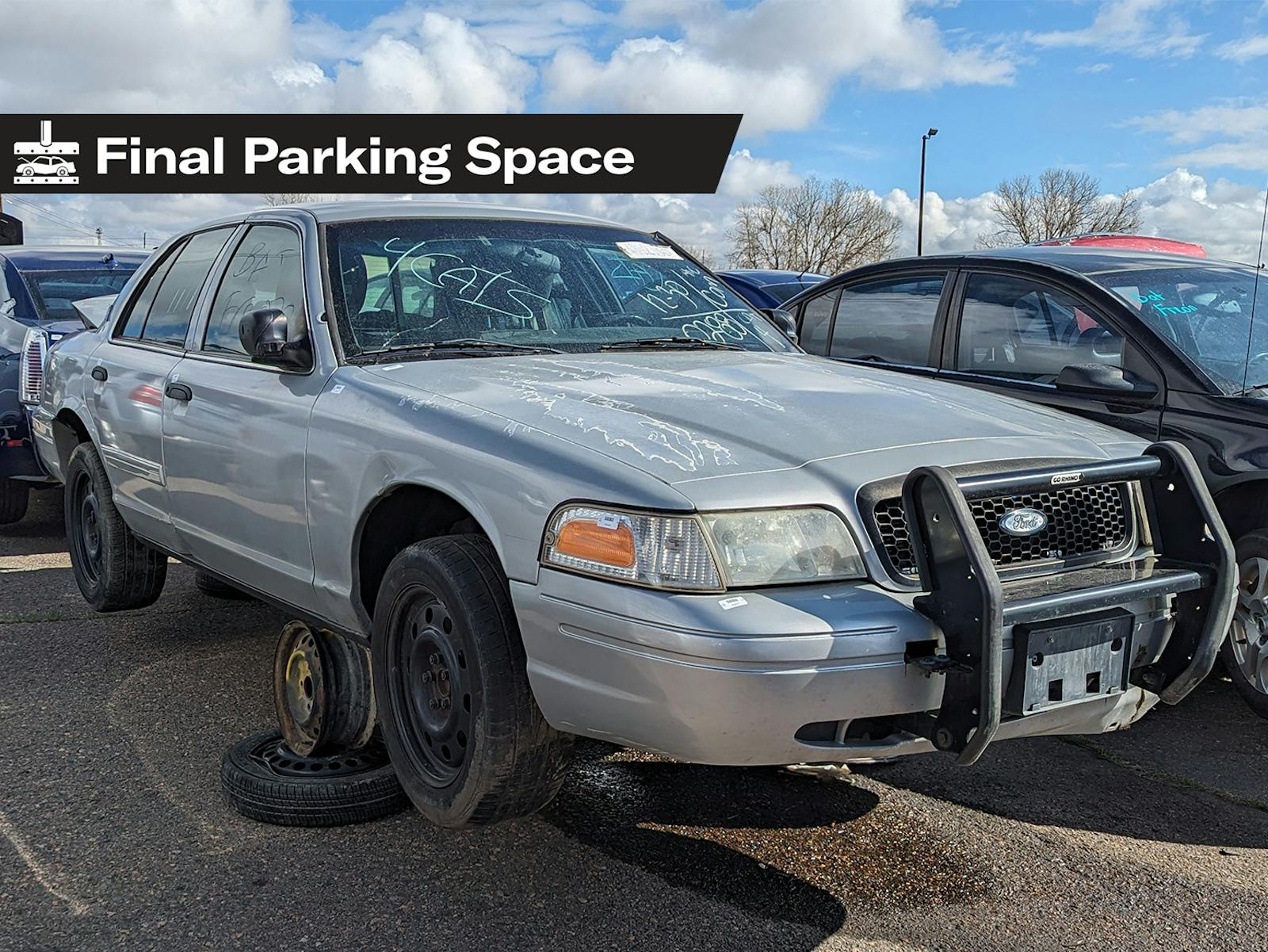Smithology: Treat her like a Fairlady

Four score and seven lifetimes ago, Nissan launched the 370Z. Or that’s how it feels, at least. An affordable sports car, one of the few left in the business, unveiled at the 2008 Los Angeles auto show. An anachronistic gift to an industry, then as now, rapidly abandoning simple and fun cars in favor of trucklets and dowdy-cow CUVs. A kinder time, maybe, and a world possibly also possessed of a longer attention span. Less enamored of yelling, at minimum.
No matter. We got another gift this week, a concept. Flawed, perhaps, but a gift nonetheless. Nissan calls it Proto Z. The shape should be filed away in your head as the Nissan 400Z, because a lightly tweaked version will be sold under that name in 2021. Pricing should kick off in the mid-$40,000s, or competitive with the Toyota Supra. The comparison is apt, given what the two cars bring to the table; the Supra uses a relatively new platform absent a manual transmission, while the 400Z will have 370Z bones but offer an updated drivetrain and three pedals.
Naturally, when faced with this information and an understated design—in an age where most new cars offer two pedals only and Cronenberg-film looks—the internet bellowed in response. The collective pushback was a combination of UGH YOU GUYS WHY IS THE FRONT BUMPER SO FLIPPIN’ WEIRD and THE PLATFORM ISN’T EVEN NEW, JERKS? KILL IT DEAD I WANT A SUPRA. No one noted that the Toyota’s front bumper makes the car look like a horny elephant seal, because memories are short and that was last year’s gripe.
Beauty is subjective, but design quibbles miss the point. And waste time.


The older I get, the more I value that commodity, am fascinated by how people use it. Einstein saw time as a river. Rust Cohle on True Detective called it a flat circle. Either way, unless you’re working at grand scale—geologic motion, Kardashian career half-life—12 sun orbits is a long time. In a decade and two years, the American space program went from first crewed flight to Skylab. A dog can be born and die of old age in 12 years; a quail can do it in six. Unlike either of those animals, a new-car birth requires ages of planning. Its existence is also predicated upon demand. Engineers can burn years on the development of a vehicle or an engine only to have market forces poof the project into a dumpster minutes after launch. The 2008 Chrysler Aspen Hybrid was in production for fewer than four seasons. The Cadillac Blackwing V-8 was killed last spring with just 800 examples built. Lotus once announced a range of five all-new models and then stuck a knife in the lot before bothering to sell even a single one.
And Nissan, bless its heart, built a sports car virtually unchanged for twelve years.
Don’t read that as a knock.

One of the strange quirks of working in the car business is how the industry can groom you to overlook bullish competence in favor of the obviously great or awful. Or even just the next new shiny. As a sports car, the 370Z was happy to just be alright, good enough in numbers and spark and soul but never sparkling, and that was admirable, because greatness was generally more expensive. The car tackled a job with verve and value—more expensive than a Mazda Miata but also faster, more blunt and big-shoulders in personality; the Nissan was slower than the usual European suspects, but also cheaper and more durable. The 370’s naturally aspirated 3.7-liter six was a long evolution of Nissan’s VQ V-6, a 1990s design that began life at smaller displacement and was generally happier there, smoother and more pleasant. Nissan kept upsizing the thing regardless in order to stay competitive, leaning into midrange torque, an obvious strength.
The personality fit the brand. Z cars have long been grunty, agreeable devices, chill in traffic and easy to drive quickly. The long-stroke straight-six in the 1970s 240Z owed a lot to midcentury Mercedes-Benz hardware, but it also gave the car a budget charm and humility, helped it sell for cheap. In 1970, $3500 would buy you one whole 240Z or roughly 60 percent of a new Jaguar E-Type. The two cars were often discussed in the same breath, comparable goals with differing execution. The Jag was a heartbreaking stunner but way more demanding to own, the 240 a bulletproof testament to how goodness doesn’t always sit atop the pyramid.

Nissan sold just 2384 370Zs in America in 2019—not barn-burning, but remarkable for a 12-year-old two-seater. That same year, this country bought 7753 Miatas. The Mazda is also a purpose-built, two-seat sports car that no one buys by accident, if less expensive than the 370Z and slower. (Only one of those qualities is certain; my wife’s Miata was more expensive than every Z but the Nismo — Ed.) The current Miata was launched in 2015. Draw your own conclusions.
When the Z-car platform-share became a barking point on Twitter, a few people crowed. As if some engineer or accountant was pulling a fast one, instead of simply trying to keep a beloved icon and brand identity alive. Spend any time watching the business, and you’ll know that struggle-bus Nissan lacks the health and cash to justify new bones for an attainable halo car. The difference in hardware barely matters unless you test vehicles for a living. More to the point, the industry is rapidly walking away from affordable fun. If you knock beasts like this long enough, convince enough people to avoid them for trivial reasons, that pace will quicken.
My friend Joel Feder is a journalist. He inherited a 1990 300ZX from his uncle and has long loved the marque, but he also understands reality. Naturally, he has been watching the Proto Z reaction with interest. And rolled eyes.
“People,” he texted me yesterday. “They could have just killed the car. They should have just killed it. They are in a bad spot. The fact that they didn’t kill it—they gave it a dime—that alone gets a standing ovation. They know it means something.”
But no, gripe about that front bumper.
Other unveils from the 2008 LA show: the last-generation Mustang GT (axed in 2014) and a new automatic gearbox for the 987-chassis Porsche Boxster (axed in 2012). Those cars are old gods long dead but still a hoot to drive, even if you’re acquainted with the last decade of automotive progress. Ask yourself the last time you looked on history and bemoaned how Company X built a lovable niche anything for slightly too long. With the Z, who cares if the bird sings a little off-tune? What’s remarkable is that it sings at all.

One more piece of trivia: That boxy grille opening is a styling-cue salute to the 240. I vaguely remember someone from Nissan pointing out that same cue on the 370, in ’08. Memory is fuzzy. That show was a long time ago. Or perhaps it only feels that way.
Funny thing, feel. Hard to explain, harder still to build a business case around. And the older I get, the more I believe it’s all that matters.


